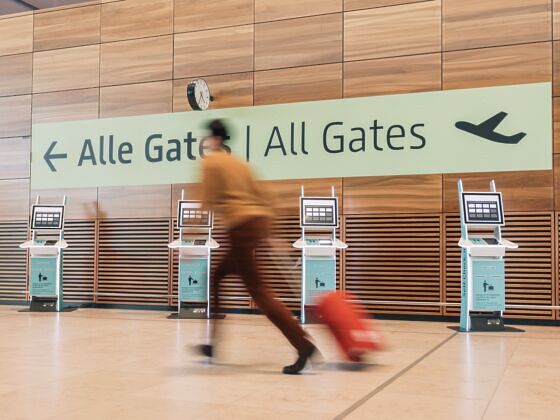Usually, I would never be caught dead booking flights with a tight connection, but in a couple of days, I’ll be going against all my instincts, take a big chance, and try to make a flight with only a 45-minute layover. To say that I’m worried about it is an understatement — I’ve been thinking about it every single day, multiple times per day, for weeks. If you think that the simple solution to my anxiety is to change my flights, know that not only was this connection recommended to me by the airline, but I also don’t have much of a choice. Because I live in a very rural area with an unreliable airport, I have extremely limited flight options. Time will tell whether I make it or not, but if the flight attendants, pilots, and travel experts I interviewed are right, I’m in trouble.


How Long Should You Really Have for Your Connecting Flight? Airline Workers and Travel Experts Chime In
“I’d say layovers between connecting flights should be at least 1.5 hour for domestic flights and three hours for international trips,” says Duke Armitage, airline pilot and founder of Aviamonde, in an email. “This should ensure you have enough time to cover most delays,” he continues.
While I should probably bow to Armitage’s expertise, I, who consider myself quite knowledgeable in all things travel-related, tend to disagree. A three-hour layover for an international flight seems like overkill. Diane Dupont, a flight attendant for French Bee, backs me up.
“If passengers travel on a long-haul flight with the same airline, I recommend two hours between the flights. But if the second flight is on another airline, I would schedule more time, about four hours, in case of a delay,” she says.
However, as Dupont explains, an itinerary that includes two or more airlines, especially if they’re not part of the same alliance, will indeed require longer layovers. You’ll need to pick up your luggage at baggage claim, re-check it, and possibly go through security again before making your way to the gate, which can take a very long time. Whether or not you need four hours is arguable.
“A two to three-hour layover is advisable to accommodate these additional steps and reduce the risk of missing your connecting flight,” says Jon Morgan, the CEO and editor-in-chief of Venture Smarter. With a background in developing software used by airports to manage flights, he has gained insights into creating smooth connections between flights.
Before booking an itinerary with tight connections, Armitage recommends that you check flight on-time performance time by using the free online tool put at your disposal by the US Bureau of Transportation. “This allows you to see how likely your flight will be delayed so you can plan accordingly,” he explains.
Beyond potential delays and airlines, travelers should also think about airport size and awareness while making a booking that includes connections. You would breeze through a regional airport or even an international airport that you know well, and struggle to make your way to the appropriate gate of a big and busy hub or an airport you’ve never been to before.
“I’d recommend adding an extra hour to your connection time if you’re at an airport as huge as Denver International or as busy as JFK,” Armitage explains.
James Kinsella founder of travel-planning website Turtle Trip agrees. “For large but efficient airports like Atlanta International (ATL), we recommend 1.5 hours for domestic and two hours for international, while Chicago O’Hare (ORD) takes more walking and needs a minimum of two hours for domestic and 2.5 to three hours for international,” he says.
If I sum up all the advice from the professionals, here is how much time you should really have for your connecting flight:
- Domestic flight with same airline: at least 1.5 hours
- Domestic flight with different airline: between two and three hours
- International flight with same airline: at least two hours
- International flight with a different airline: between two and four hours
While sticking to the experts’ advice is always a good idea, if, like me, you’re stuck with a tight connection, there are a few things you can do to help.
- Travel with a carry-on luggage only. If you travel with a checked luggage, you might make your connecting flight but your bag likely won’t.
- Book a seat in the front of the plane so you can get out as quickly as possible, even if it means you need to pay a little extra.
- Purchase a travel insurance that covers missed connections so you can get a refund for meals, hotels, or alternative flights in case the worst happens.